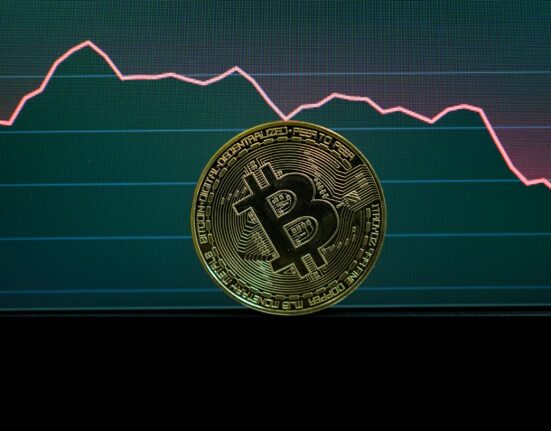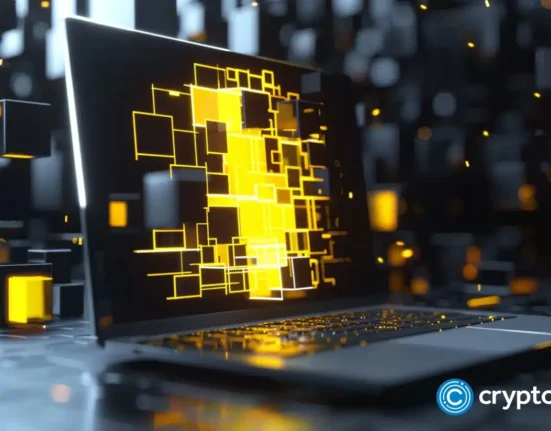The word peer loosely means equals. In cryptocurrency circles, peer-to-peer (P2P) interaction means transaction activity between members of a cryptocurrency network relating as equals. It is a departure from centralized banking, where an all-powerful bank regulates all transactions.
In this article, we’ll learn what is peer-to-peer (P2P), how it works, its role in defi, and the advantages and challenges of peer-to-peer technology.
Understanding peer-to-peer (P2P) networks
A peer-to-peer (P2P) crypto trading platform is one where users can purchase crypto assets with fiat and also sell crypto assets for fiat without interference from third parties.
In a typical P2P network, members contribute an equivalent amount of shared and earned data or value. So much can be shared via a P2P network.
The earliest P2P usage was introduced in 1979, just as the computer era was coming to full effect. It was introduced as a Usenet that enabled its users to exchange messages.
In the context of cryptocurrency, peer transactions are influenced by Bitcoin’s (BTC) original idea to maintain privacy and eliminate centralization. Such transactions on the P2P network do not require supervision by a 3rd party to complete the transaction. That said, on most P2P platforms, the only third party is the service provider that monitors trades to prevent scams. P2P adopts a technology that ensures that there are safe transactions between two parties.
Transactions on a P2P network rely on blockchain security and are recorded, and impossible to falsify the information of such transactions recorded on the ledger.
Now that we have explained peer-to-peer networks, let’s find out how does it work.
How does peer-to-peer work?
Peer-to-peer blockchain networks do not have a central authority. Rather, all nodes, or peers, are interconnected. There is no hierarchy in a mesh network with a “flat” topology, which links the network nodes. Peer-to-peer networks are open, decentralized, and resilient by nature since nodes in the network concurrently provide and receive services, with reciprocity acting as the incentive for involvement.
A P2P network differs from a conventional client-server configuration in that every node on the network must act as both a client and a server to other nodes. In a client-server system, the client always downloads files from a central server.
Conversely, in a decentralized system, every node functions as a server with the ability to download and distribute content to other nodes. The speed, security, and effectiveness of the P2P network are explained by the possibility that a node may carry out both the sending and receiving tasks simultaneously.
The role of P2P in DeFi
Banks and other financial entities are frequently used as middlemen in traditional lending arrangements. When borrowers apply for loans through these organizations, lenders deposit their money in exchange for a set interest rate. However, there are built-in inefficiencies in this centralized paradigm, including exorbitant prices, restricted accessibility, and a lack of transparency.
P2P lending in DeFi uses smart contracts and blockchain technology to reverse this paradigm. By connecting borrowers and lenders directly, these platforms do away with the need for middlemen. Without the need for human involvement, smart contracts—self-executing agreements stored on the blockchain—ensure that obligations are enforced.
For example, by indicating the desired amount, interest rate, and repayment time, a borrower might seek a loan. After reviewing these requests, lenders can fund loans that fit their risk tolerance. Following mutual consent, the smart contract controls every step of the procedure, guaranteeing that money is disbursed and reimbursements are made by the conditions established.
Advantages of P2P in cryptocurrency
Since a distributed network of computers lacks a single point of failure, peer-to-peer networks provide numerous advantages over the conventional client-server architecture. However, with a client-server arrangement, data could be lost if the server fails.
Furthermore, because P2P networks are decentralized and do not have a centralized server, they may be able to withstand attacks very well. Blockchains with a P2P design, as opposed to banks, can allow network users to conduct transactions.
Sharing games and software over file-sharing networks is one of the many applications of P2P blockchain networks. Cryptocurrencies also use P2P networks to provide decentralized transaction processing.
Challenges
Security and trust remain the core challenge of P2P crypto technology. This means that certain information that evades users’ privacy is not needed before engaging in a P2P practice.
However, in reality, not all cryptocurrency exchanges uphold the tenets of P2P. While some do, others require certain information that evades privacy from participants. These are centralized exchanges that bow to the regulations of the countries where they operate. This means that certain governments require centralized exchanges (CEX) to collect user information from customers that reveal their identity, which undercuts the goal of BTC’s P2P agenda.
One may wonder why the government is interfering. This apparent overreach is because criminals have hidden under the privacy that P2P provides to perpetrate illicit activities.
The future of P2P
P2P trading and decentralization have a very bright future. Blockchain technology is always evolving, opening the door to more effective, safe, and welcoming platforms. As these systems develop, we anticipate an increase in the kinds of assets traded and the digital interactions between people and organizations.
The trend towards a more decentralized society emphasizes the value of autonomy, privacy, and equity in the digital age and is not only a technology but also a cultural change. At the front of this shift is peer-to-peer trading in cryptocurrency, which holds up the promise of democratizing financial and informational exchanges for all.








